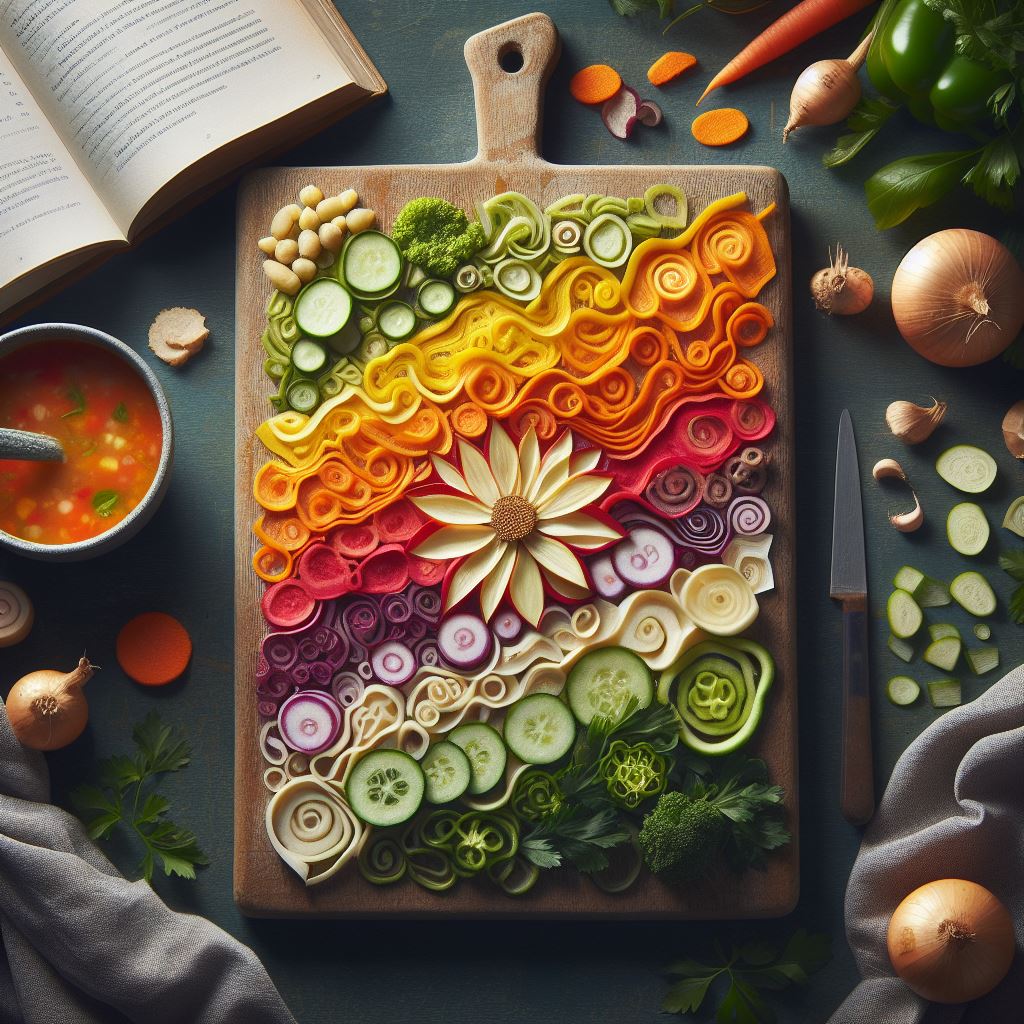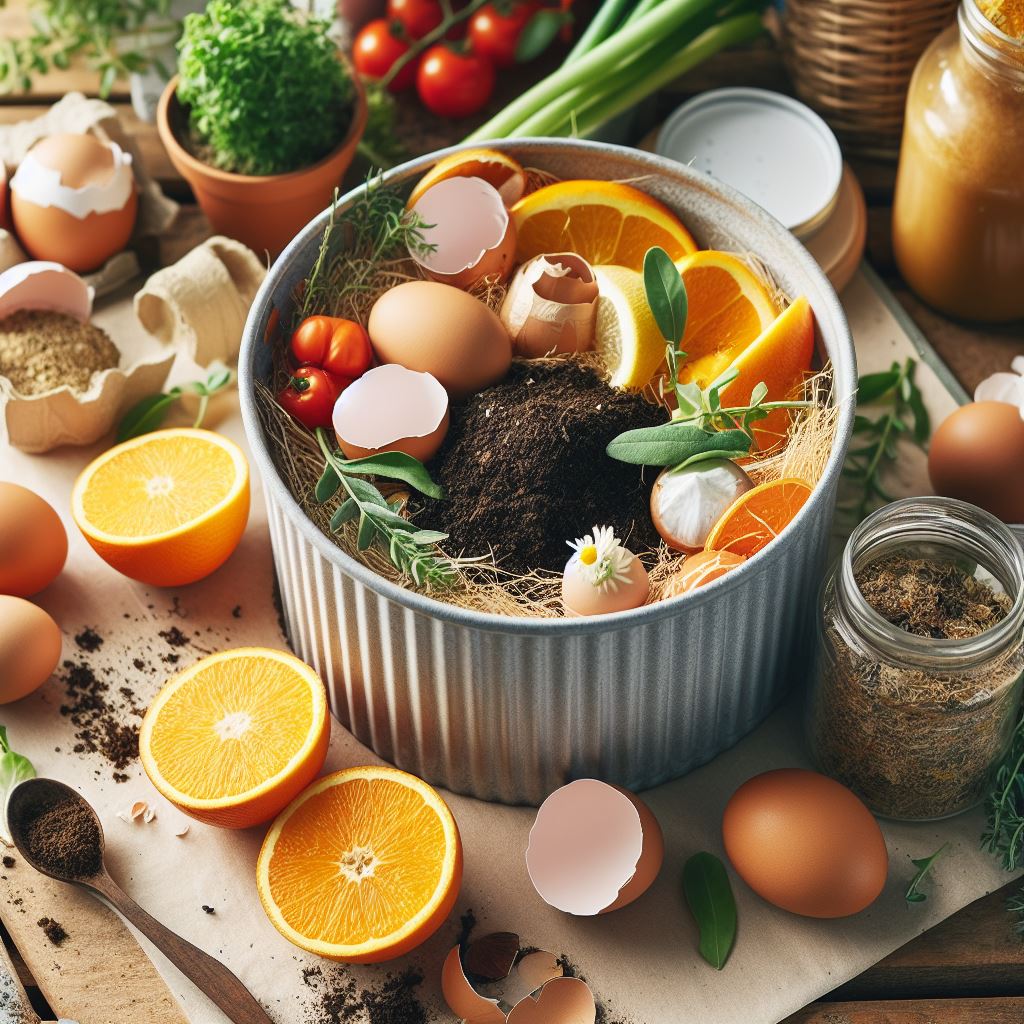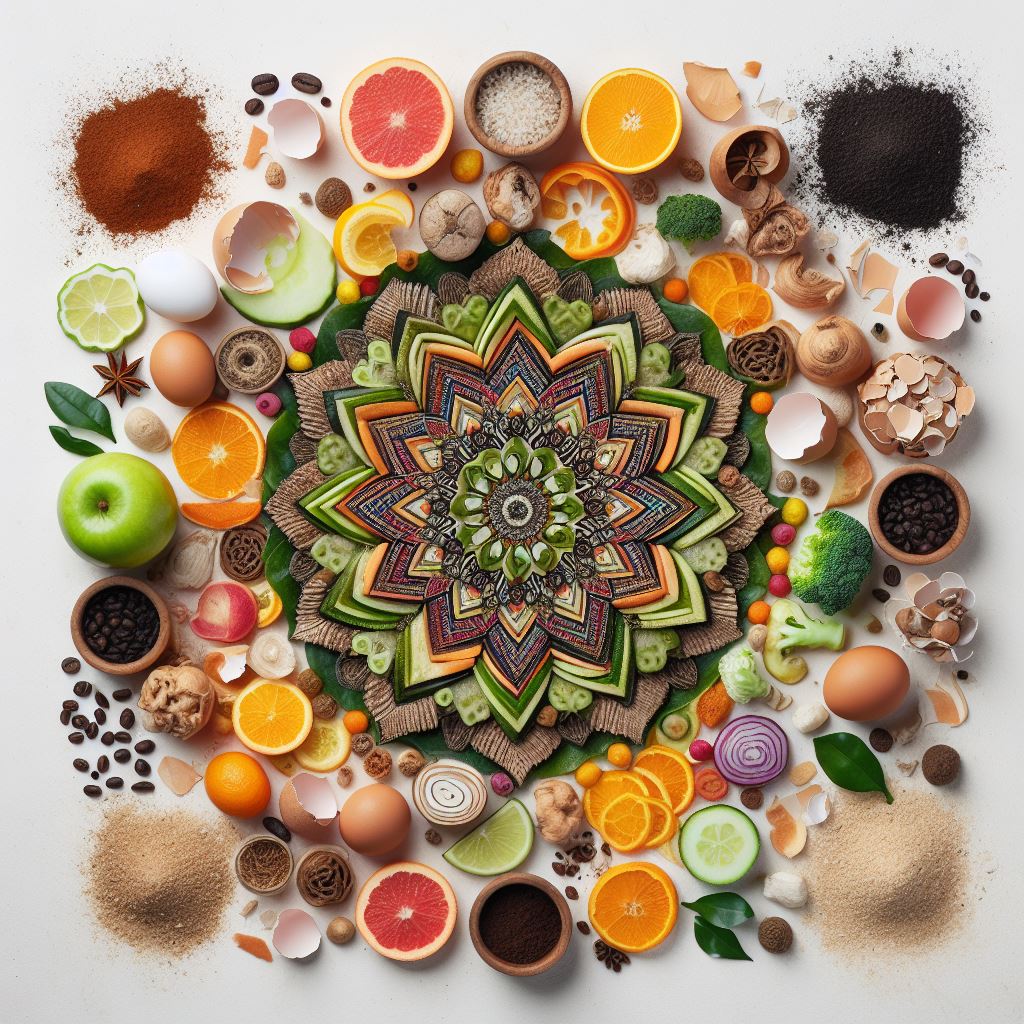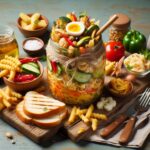Creative ways to use food scraps include making homemade vegetable stock or composting for garden fertilizer. These methods elevate kitchen efficiency and eco-friendliness.
Tackling food waste is a practical challenge in many households. By repurposing food scraps, not only can we minimize waste but also unlock a myriad of benefits that go beyond mere sustainability. Transforming scraps into nutrient-rich compost can significantly enhance garden soil quality, while simmering leftover vegetable bits can yield a flavorsome stock, adding depth to soups and stews.
This approach doesn’t just save money; it also fosters a culture of resourcefulness and environmental responsibility. Embracing such practices reflects a growing awareness of the need for sustainable living, encouraging a thoughtful and innovative relationship with the food we consume.

Introduction To Food Scraps
Welcome to the world of kitchen creativity! Ever wonder what to do with the peels, cores, and ends typically tossed in the trash? This blog post explores the innovative ways to give food scraps a new lease on life. Reducing waste never tasted so good!
Defining Food Scraps And Their Environmental Impact
Food scraps are the leftovers from meal preparation. Think apple cores, potato peels, and carrot tops. These bits might seem useless but hold untapped potential. Neglecting this potential has consequences. Landfills overflow with wasted food, emitting greenhouse gases. But there’s hope and opportunity for change.
Benefits Of Reducing Food Waste Through Utilization Of Scraps
Using food scraps comes with perks. Not only does it minimize household waste, it can also save money and encourage a creative cooking approach. Composting transforms scraps into nutrient-rich soil, benefiting gardens. Reduction in landfill waste means a happier, healthier planet for all.
In The Kitchen: Cooking With Scraps
Think twice before tossing food scraps in the bin! The odds and ends of your meals can transform into delicious dishes. Explore creative ways to make the most of every ingredient in your kitchen.
Vegetable Ends And Peels: Soups, Stocks, And Broths
Don’t throw away those veggie scraps! Carrot peels, onion ends, and potato skins can simmer to make rich broths. Here’s how:
- Collect a mix of ends and peels in a freezer bag.
- Once you have enough, boil them in water with salt and herbs.
- Strain the mixture for a flavorful base for soups and sauces.
Citrus Peels: Zests, Infusions, And Cleaning Agents
Orange, lemon, and lime peels brighten up meals and homes. Use them like this:
- Grate peels for zest in baked goods and dressings.
- Soak peels in vinegar for a natural cleaner.
- Infuse peels in oil or alcohol for flavorful twists.
Meat Bones And Trimmings: Homemade Broths And Fats
Save bones and fat trimmings for a culinary treat:
- Simmer bones in water to craft homemade broth.
- Render fat trimmings for cooking oil with a flavor kick.
Herb Stems And Wilting Greens: Pesto, Sauces, And Smoothies
Even stems and wilting greens can find new life:
- Blend herb stems into pesto or sauces.
- Toss wilting greens into smoothies or stir-fries.
Stale Bread Transformations: Croutons, Bread Puddings, And Stuffings
Stale bread can become a tasty crunch or a soft delight:
- Cut and bake into croutons for salads.
- Mix with milk and eggs for bread pudding.
- Crumble for stuffing or a thickener in soups.
Fruit Scraps: Jams, Vinegars, And Natural Sweeteners
Those overripe fruits and peels are a sweet treasure:
- Boil fruit scraps with sugar to make jam.
- Ferment with water and sugar for homemade vinegar.
- Simmer to create natural sweet syrups.
Beyond Cooking: Other Uses For Food Scraps
Don’t toss those food scraps! They’re treasure, not trash. Beyond the stove, they can green your garden, shine your shoes, and even color your crafts. Let’s dive into how these kitchen leftovers can benefit your home and the planet.
Coffee Grounds As Fertilizer And Natural Scrubs
Coffee grounds enrich soil with nitrogen. Here’s how:
- Mix grounds into soil for a nutrient boost.
- Spread over soil before watering for a slow-release fertilizer.
They’re also great for your skin:
- Combine with oil to make a face or body scrub.
- Gently exfoliates and improves circulation.
Eggshells In The Garden For Pest Control And Calcium Supplements
Crushed eggshells are a garden’s best friend:
| Use | Benefits |
|---|---|
| Pest Control | Sharp edges deter slugs and snails. |
| Calcium Boost | Add to compost or soil for stronger plant growth. |
Banana Peels For Polishing And Plant Care
Banana peels aren’t just for pratfalls. Use them to:
- Polish leather shoes with the inside of the peel.
- Bury near plants for a potassium-rich soil treatment.
Creating Natural Dyes With Onion Skins And Avocado Pits
Enter a world of color with veggie scraps. They make beautiful dyes:
- Onion skins give a warm, earthy tone.
- Avocado pits create soft pink hues.
Boil scraps in water, strain, and start dyeing fabric or eggs!
Composting: Transforming Scraps Into Soil
Think your food scraps are just trash? Think again! Composting turns your kitchen leftovers into soil booster, giving your garden a green edge. Let’s dig into how every peel and core can come full circle.
Basics Of Composting Food Waste At Home
Home composting is easier than it sounds. A simple bin is your start. Just mix greens, like veggie peels, with browns, like dried leaves. Add air, water, and time. Soon, rich soil emerges.

What Can And Cannot Be Composted
Not all scraps are equal for compost. Yes to fruit, veggies, eggshells, and coffee grounds. No to meats, dairy, and oils. These can spoil the mix with odors and pests.
The Role Of Food Scraps In A Balanced Compost
Food scraps are compost gold. They bring crucial nutrients to the pile. But balance is key. Mix them with yard waste to get perfectly balanced compost.
Tips For Successful Composting And Common Mistakes To Avoid
- Keep it moist, like a wrung-out sponge.
- Turn regularly for quick breakdown.
- Chop up large pieces for faster composting.
- Don’t let it get too wet or dry.
- Avoid composting animal products.
Community And Education: Sharing The Knowledge
Every food scrap holds the potential for growth, learning, and community bonding.
Local neighborhoods bloom when residents share their wisdom on sustainability.
Transform peels and leftovers into lessons of resourcefulness and environmental care.
Workshops And Cooking Classes On Food Scrap Utilization
Interactive workshops inspire families to rethink kitchen leftovers.
Chefs and enthusiasts alike teach how to whip up delicious meals from what was once waste.
- Stocks & Soups: Vegetable ends turn into hearty flavors.
- Compost Cookies: Fruit peels become sweet treats.
- Pickle Power: Brine excess for zesty snacks.
Community Composting Programs And Their Benefits
Share compost duties and nurture community gardens.
These programs offer:
environmental and social benefits.
- Reduces landfill waste.
- Enriches local soil.
- Strengthens neighbor ties.
Educational Resources And Campaigns For Reducing Food Waste
Bright posters and online platforms spread the word on food conservation.
Resources include:
- Infographics: Display food scrap facts.
- Videos: Show creative reuse methods.
- Guides: Teach waste reduction at home.
Joint efforts shape greener habits and build a sustainable future.
Innovative Approaches To Food Scraps In Business
The world of business gets crafty with food scraps. Companies are no longer seeing scraps as waste. Instead, they are goldmines for innovation. Here’s a peek into how businesses transform food leftovers into something extraordinary.
Restaurants And Chefs Pioneering Zero-waste Cooking
Top chefs and eateries are setting the bar high. They are turning peelings into pickles and bones into broths. Check out these cool moves:
- Peel Pesto: Carrot and potato skins whip up into tasty pestos.
- Bread Crumbs: Stale bread becomes a crispy topping for dishes.
- Meat Trimmings: Used in house-made charcuteries or stocks.
Food Industry Byproducts And Their Reimagined Purposes
Imagine a world where nothing goes to waste. Food manufacturers are leading the way. They find new uses for what was once trash. See what they make:
| Byproduct | Reimagined Purpose |
|---|---|
| Whey from yogurt | Protein shakes and energy bars |
| Spent grains from beer | Bakery goods and cereals |
| Fruit pulp from juicing | Fruit leathers and smoothie boosters |
The Rise Of Upcycled Food Products And Startups
Startups are sprinting ahead with this trend. They take ‘trash’ and turn it into treasure. Check out their creations:
- Coffee Flour: Made from coffee cherry husks.
- Vegetable Chips: Crafted from misshapen veggies.
- Snack Bars: Packed with surplus fruits and nuts.
These products are flying off shelves and into our hearts.
Cultivating A No-waste Mindset
Embracing a no-waste lifestyle transforms leftovers into treasures. It’s about seeing potential in every peel, crust, and core. Food scraps, once viewed as waste, now promise a world of flavor, nutrition, and opportunity. Here’s how small steps can lead to significant changes.
Small Changes With Big Impacts: Summarizing Everyday Actions
Every action counts in the fight to reduce food waste. Start with these tips:
- Compost fruit and veggie scraps.
- Create broths with bones and stems.
- Repurpose coffee grounds as fertilizer.
- Pickle rinds for zesty snacks.
- Blend wilted greens into smoothies.
These habits can significantly lower waste in your own kitchen.
Encouraging Sustainable Practices Within Communities
It’s not just individual kitchens that can make a difference. Entire communities can join in:
- Start community compost programs.
- Host food scrap cooking classes.
- Support local farms using scraps as animal feed.
- Encourage schools to educate kids on sustainability.
A united approach multiplies the impact and promotes a healthier planet.
Looking Ahead: The Future Of Food Scrap Utilization
What’s next for food scraps? Innovation is key:
- Technological advancements in composting equipment.
- New policies promoting zero-waste goals.
- Increased investment in food upcycling startups.
Together, we can reshape our food system. We can turn today’s scraps into tomorrow’s solutions.

Conclusion
Embrace the art of zero-waste cooking with these innovative food scrap ideas. Every peel, core, and end holds potential for culinary creations. Begin your journey towards a sustainable kitchen, keeping both flavor and the environment in mind. Remember, your scraps are stepping stones to eco-friendly, flavorful discoveries.
Happy experimenting!
Frequently Asked Questions Of Creative Ways To Use Food Scraps
What Can You Do With Old Food Scraps?
Compost old food scraps to enrich soil. Alternatively, use them in vermiculture or create a homemade broth. They can also serve as natural fertilizers or be donated for animal feed.
What Can You Make With Food Scraps?
With food scraps, you can create compost, stock for soups, pickles, or natural dyes. They also work well for homemade cleaners or potpourri.
What Can I Do With Food Scraps Without Composting?
Use food scraps as animal feed, donate them to a local farm, or try vermicomposting. You can also make broth from vegetable trimmings or use coffee grounds as fertilizer for acid-loving plants.
How Could Food Waste Be Used In Creative Ways?
Food waste can be composted to enrich soil, used in biogas production for energy, or repurposed in innovative dishes to reduce spoilage. Crafting natural dyes or developing eco-friendly packaging are other creative applications for food waste.







